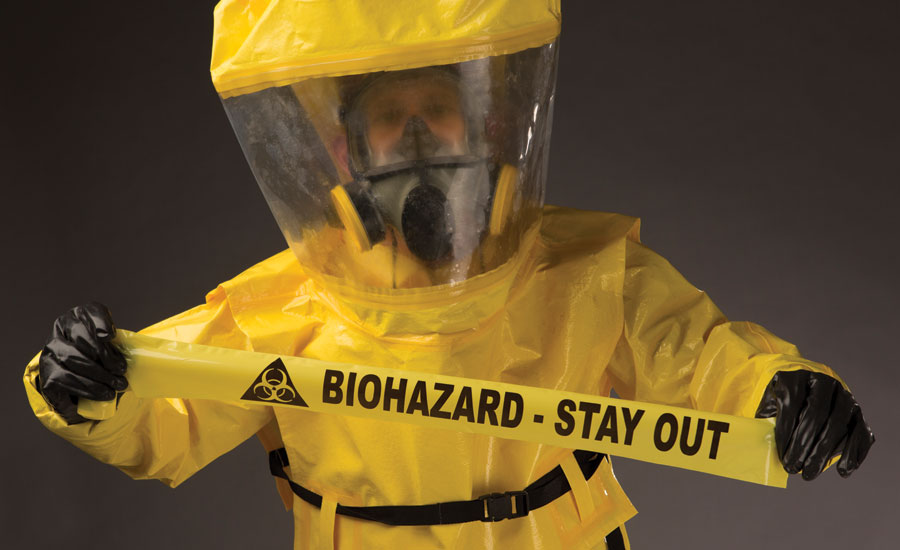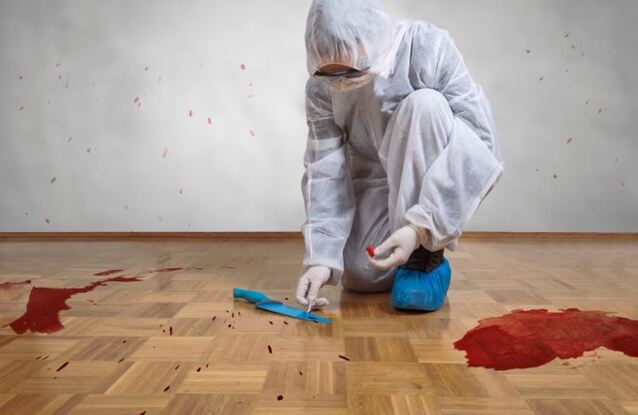Specialist Biohazard Cleaning for Criminal Offense Scenes, Trauma Incidents, and Infected Rooms
In the world of professional biohazard cleanup, thorough focus to detail and adherence to security methods are paramount. As we dig right into the details of biohazard cleaning for these delicate atmospheres, a much deeper understanding of the difficulties and important procedures involved will emerge, dropping light on the essential duty of professional cleanup solutions in bring back safety and tranquility of mind.

Relevance of Biohazard Cleaning
Biohazard cleaning following crime scenes and injury events is essential for ensuring the security of individuals and the environment. When these occurrences happen, they typically leave a variety of biohazards such as blood, physical liquids, and other possibly transmittable products. These substances can nurture hazardous microorganisms like infections and microorganisms, presenting severe health and wellness threats otherwise effectively cleaned up and disinfected.
Expert biohazard cleanup services are educated to take care of these harmful materials securely and properly. They have the necessary devices, such as individual protective gear and specialized cleansing representatives, to extensively sanitize the impacted locations. By entrusting the clean-up to trained professionals, people can avoid exposure to damaging pathogens and stop the spread of transmittable diseases.
Moreover, appropriate biohazard cleaning is essential for protecting the atmosphere. Incorrect disposal of biohazardous materials can infect soil, water sources, and air, posturing a risk to wild animals and the community. By adhering to rigorous clean-up protocols, professionals can make sure that biohazards are securely gotten rid of and dealt with according to laws, decreasing the danger of environmental contamination.
Types of Biohazards Encountered
Numerous dangerous products typically encountered in criminal offense scenes and trauma events existing considerable health and wellness risks if not dealt with correctly. Blood and bodily liquids are among the most common biohazards located in these scenarios. These fluids can lug microorganisms such as HIV, liver disease B and C, and other hazardous microbes. Furthermore, tissues, organs, and body parts can additionally posture serious health hazards as a result of potential contamination.
Another kind of biohazard usually come across is sharp things like needles, busted glass, and other products that can trigger injuries and transfer infections. Chemical hazards are likewise a worry, as criminal offense scenes might have materials like tear gas, pepper spray, or drug manufacturing products that call for specific handling and disposal procedures to protect against more harm.
In addition, mold and microorganisms development can take place precede where decomposition or prolonged direct exposure to moisture has actually happened. These microbes can release contaminants and irritants right into the air, positioning respiratory threats to those revealed. Generally, biohazard cleaning experts must be well-equipped and qualified to properly deal with these different kinds of hazardous materials to make sure the safety and security of themselves and others.
Tools and Protective Equipment
When addressing the crucial task of dealing with biohazards encountered in crime scenes and trauma cleaning crime scene jobs incidents, the use of proper tools and safety equipment is vital to making sure the safety and security of individuals included in the cleaning process. Specialized cleaning tools like biohazard bags, anti-bacterials, and sharps containers are required for the risk-free collection and disposal of polluted products. Making sure that all tools is correctly preserved, frequently inspected, and utilized according to safety guidelines is crucial in lessening the threat of direct exposure to biohazards during clean-up procedures.
Cleaning Process and Techniques
Effective and detailed cleanup of biohazardous materials from crime scenes and trauma incidents requires precise attention to information and adherence to rigorous security procedures. The cleanup procedure normally involves numerous vital steps. Originally, the location needs to be evaluated to identify the degree of contamination and the suitable cleaning techniques required. Next, all biohazardous materials, consisting of blood, physical liquids, and cells deposits, have to be meticulously removed and thrown away in conformity with local regulations.
Following the removal of biohazardous materials, the damaged location undertakes a thorough cleaning and disinfection process. This step entails making use of specialized cleansing representatives and tools to guarantee that all traces of contamination are eradicated. After cleansing, the area undergoes rigorous testing to confirm that it is cost-free and risk-free of any type of continuing to be biohazards.

Purification and Disposal Treatments
To ensure comprehensive purification and correct disposal of biohazardous products, adhering to the meticulous cleaning process, particular procedures must be diligently adhered to with strict adherence to safety procedures. Decontamination involves the removal or neutralization of contaminants to lessen the risk of direct exposure and spread of unsafe compounds. This procedure usually includes cleaning, sanitizing, and sanitizing the afflicted location using specialized equipment and EPA-approved chemicals.
Once purification is finished, appropriate disposal of biohazardous products is critical to protect against further contamination or injury. Biohazardous waste, such as blood-soaked materials or bodily fluids, have to be carefully collected, packaged, and classified according to regulatory standards. ATP testing. These materials are then moved to accredited centers for disposal with ideal networks, making certain compliance with regional, state, and government policies

Conclusion
Finally, expert biohazard cleanup is important for making sure the safe and effective elimination of hazardous materials from crime scenes, injury events, and polluted rooms. By making use of customized devices, protective equipment, and complying with proper clean-up processes and techniques, biohazard clean-up teams can effectively dispose and decontaminate of biohazards, decreasing the danger of direct exposure and injury to people and the atmosphere.
As we dive right into the details of biohazard cleanup for these delicate environments, a much deeper understanding of the difficulties and critical procedures entailed will certainly arise, shedding light on the indispensable duty of expert clean-up services in restoring safety and tranquility of mind.
Expert biohazard clean-up services are trained to take care of these hazardous materials safely and effectively. By following strict cleanup protocols, experts can guarantee that biohazards are securely removed and disposed of in conformity with guidelines, minimizing the threat of environmental contamination.
On the whole, biohazard clean-up experts must be experienced and well-equipped to properly deal with these different kinds of unsafe products to make certain the safety and security of themselves and others.
When resolving the crucial job of handling biohazards experienced in criminal offense scenes and injury events, the application of proper tools and safety gear is vital to making sure the safety and security of people involved in the clean-up process.